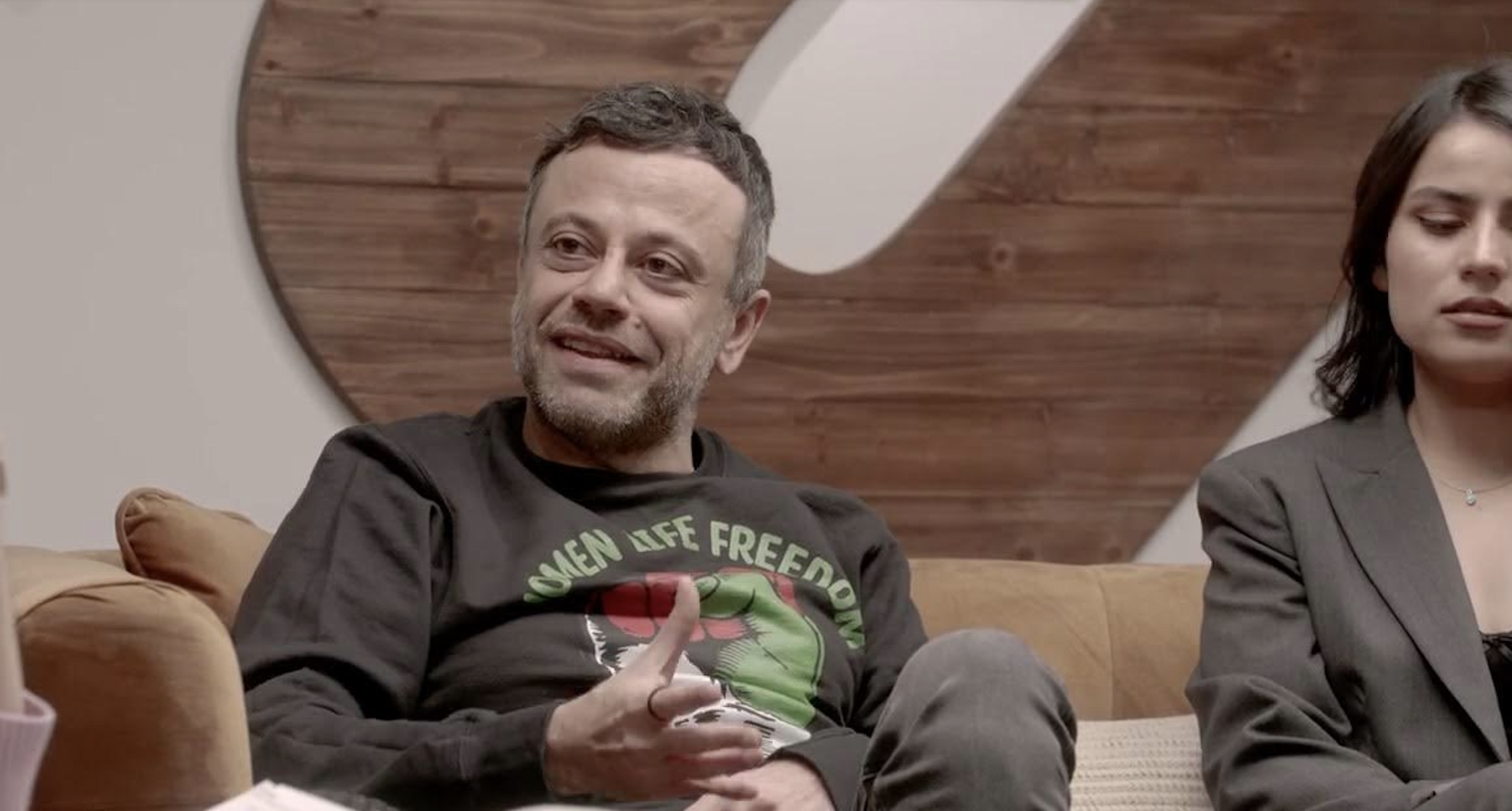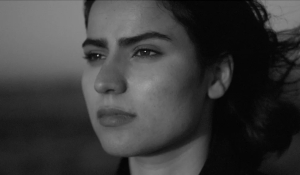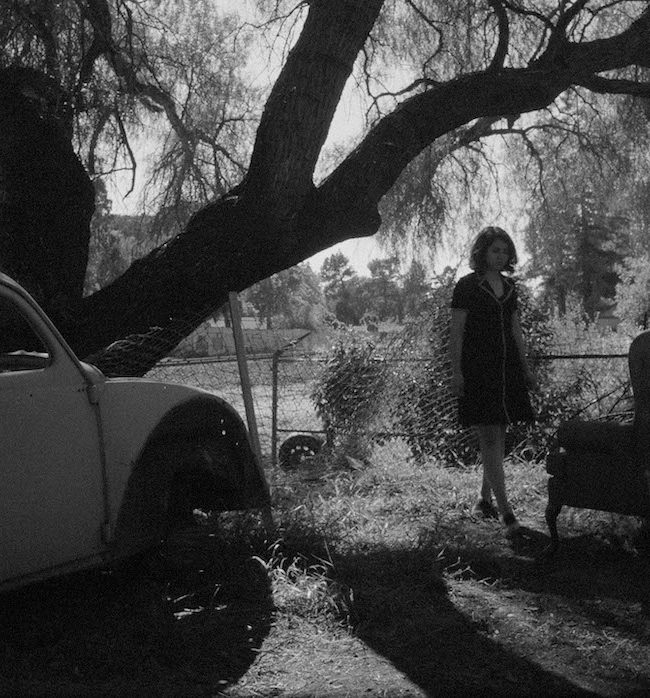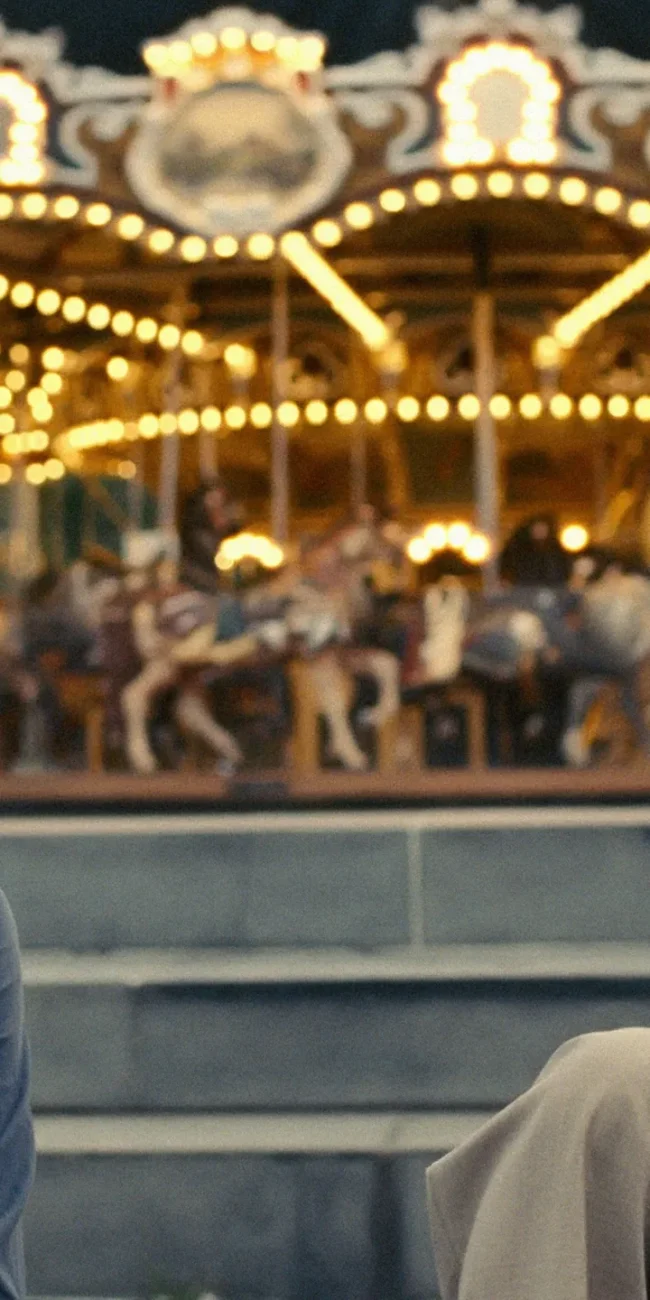A Conversation with Babak Jalali (FREMONT)

Babak Jalali was born in Iran and raised in London. He attended film school in London and in 2016 released his feature debut Radio Dreams. The film was a hit at numerous festivals and he quickly followed it up with his 2018 feature film Land. His latest film Fremont, which is in select theaters now, has had buzz for a while off of its SXSW debut. The film stars first time actress Anaits Wali Zada, and veteran actors Jeremy Allen White and Gregg Turkington. The film is amazing, a total rarity and Jarmusch-esque. It was a pleasure to speak with Babak in the following conversation edited for length and clarity.
Hammer To Nail: Thank you so much for taking the time to speak with me. I thought the film was really awesome. I had a great time watching it. The first thing I noticed with the film is that 4:3 aspect ratio and the black and white cinematography. You’re using that amazing Alexa Super 35 camera. Talk about your decision to shoot it this way and what it was like to use that camera?
Babak Jalali: The idea to shoot in that aspect ratio came hand-in-hand with the idea to shoot in black and white. When we were writing the script, I didn’t actually think that we were going to do it in black and white. It was much later, really just before pre-production where I had a sudden urge and a feeling that this would actually work better in black and white. I said this in a few Q and As after screenings and festivals but, when the question of why black and white, why this aspect ratio came up, there isn’t a very eloquent intellectual reason for it, rather than it was just something in my gut I felt this would look a lot better and nicer in black and white.
The whole atmosphere of the film, the whole, let’s say, mood of the film would come across better in black and white. One thing in the back of my mind was, even though we don’t show it that much, part of the story takes place in Chinatown. Even though, like I said, we don’t really show that much of the exterior of Chinatown, just briefly, we refer to it. We’ve seen Chinatown in color a lot, you know, the reds and the oranges. Fremont, which is sort of a nondescript commuter town versus San Francisco, which is a cosmopolitan international town. I didn’t want to make it seem like she’s going into this wonderful big city. So I wanted them to both look similar in a way. With black and white, that was more achievable, I thought. The main character in the film is isolated by the aspect ratio. It makes her feel boxed in more versus if it was a wider framing or composition. I would say those are the primary reasons. I must also say whenever you suggest something like black and white, you always are hoping someone backs you up or someone says, let’s do it. Laura was immediately taken by the idea. To share ideas really gave me also that confidence in order to pursue it.
HTN: It’s one of the best looking movies of the year. you collaborated with Carolina Cavalli on the script. So I’m just wondering, what was that collaboration like?
BJ: It was great. I mean, I was editing Catalina’s feature film, first feature film as a director. Amanda I was the editor on that. So I was in Rome editing when the call came that we were soon going to go into pre-production on the film. So as soon as I finished editing that, I went over to Oakland from Rome to start prepping on Fremont. Carolina’s amazing because she’s really gifted, particularly in dialog, I mean, in a really scary way. Like someone like Lexi can just literally without thinking come out with stuff. Like I remember, even when I was in Oakland on pre-production, I was struggling with a scene in the film, and I called her up and she just came out with it and she has a sense of the absurd as well, which I appreciate. So that was a real pleasure working with her. I think she was very good and also told me if I was making things a bit too inaccessible, which is always helpful in a co-write. We had done trips to the Bay Area together for research and we’d seen locations together. I felt like a lot of the places that we included in the script were places we gravitated towards when we went down there.
HTN: There is plenty of amazing dialog in this film, and one of my favorite moments comes around the 15 minute mark where Donya goes to get coffee and there’s this amazing little moment between her and the boss who talks about his obsession with fortune cookies. So I’m just wondering how this moment came to be.
BJ: We changed that a bit after we cast Eddie [Tang]. I didn’t audition. I never audition. I ask people to send a video and I ask them to tell us about a childhood memory. Then we altered the dialog a bit to go with the way he had done the audition day and because it also fit in with the tone of most of the other dialog in the film.
HTN: I really love that moment. You said there was no audition process, so how did the rest of the casting work? Gregg Turkington Jeremy Allan White…We have a first time actress starring in the film as well. So how did that all go?
BJ: once we got the word, it happened really quickly because like I said, I was in Rome editing, carrying this film. We decided to get the project going again because originally we’re supposed to shoot in the summer of 2020, but then the pandemic stopped that. So we hustled. I got over to the Bay Area and we didn’t have a cast, we didn’t have a crew. There’s not a big pool of professional actresses who are Afghan in the United States. Not that I necessarily wanted a professional. All my previous films had been made with nonprofessional actors and actresses. What we did was like an open casting call on social media and through Afghan community centers around the United States. We got some people getting in touch saying they’re interested. We met them on Zoom.
Most of them were second generation Afghans. And then someone named Anita, who ended up getting the role passed on the information to us as she emailed, saying, my name is Anita, I’m 22, I’m in Maryland. And five months ago, I left Afghanistan on one of those evacuation flights when the Taliban returned. I’ve never acted before, but I’m interested. So I got to zoom with her. She was very honest. She goes, “My English is not the best. I only got to this country five or six months ago,” but immediately she blew me away because a lot of her own story was similar to the character’s story. I mean, Anita herself was never a translator, but she had left Afghanistan recently as a girl in her early twenties. And she was starting her life from scratch, essentially.

Anaita Wali Zada in FREMONT
We had a couple of zooms with her, and I thought she was absolutely amazing. Her presence, her own way of being. And then she was just so determined when she came to Oakland. So pre-production, she was practicing her English all the time. She was really, really determined.I do believe, the fact that she could relate a lot to the character helped her and also us in getting that kind of performance from her. Gregg Turkington I’ve been a fan of for a long time through his anti-comedy or through cinema or through Rick Alverson films. One of our producers, George Rush, sent him the script she got. He wanted to talk, so we got a call and he said he’d do it. He was just an amazing human being, so kind, so patient. And also the way both him and Jeremy Allen White were with Anita, the lead was incredible because then they both knew the situation. They both knew she had zero experience. She was thrown into the deep end.
I think they gave her a sense of calm in order to be able to do this. We were literally in the tail end of pre-production and like a few days before the shoot and we hadn’t cast that role and we were going to start with that character. One of my closest friends was Antonio Campos, a director based in New York, and me and Antonio lived in Paris together. Gosh, in 2006, we were both writing our first feature films as part of the Cannes Film Festival residency, and Antonio’s first feature film was Afterschool, which had a 16 year old Jeremy in it. So I called Antonio and said, “Listen, we don’t have anyone for this role.” And he goes, “Why don’t you call Jeremy?” I said, “There’s no way he’ll do this.” He goes, No, he’s very cool. Just call him. What do you have to lose?” So I called him. I sent him the script the next day and he said he liked it. He drove up to the Bay Area and he did it. And like I said, the first two scenes, the first two days of Anita in front of the camera were her scenes with Jeremy. So she was thrown in right at the deep end in the end. I think that really helped because although before the shoot, she had no idea who he was, she went on Instagram like the day before she said, Oh my God, this guy is well known. But because Jeremy is a complete sweetheart, he was very, very supportive, very helpful with her. I think they got along very well. Sheldon and the rest of the cast are local and from the Bay Area. Joanna, who works in the cookie factory, was the set decorator of my previous film of the Bay Area Radio Dreams. And the others are all local Bay Area actors and actresses that we did, with an open call and we had a local casting director who helped us find them.
HTN: Well, the casting process was great because each of these characters are just so specific and so amazing. They really pop on the screen. So speaking of how different these characters are, I feel like that can manifest itself in the clothing they wear. So I’m wondering how the costuming worked?
BJ: So Caroline Sebastian, who’s our costume designer, lives in L.A. She’s one of the only crew that came from outside the Bay Area. She generally has just very good taste in the way she dresses herself as well. she’s not a costume designer That looks to be elaborate just for the sake of being elaborate. and so we decided that once we had a name for the cookie factory, we made those shirts and the rest of the clothing. No way I was going to have an actor wearing, like, traditional Afghan clothing. Right. Because, A, you know, she’s not that person. And B, she’s, you know, a young girl who is living in the States. So it went along the lines of just being very comical. also with Anita about what she usually would wear and things like that. Yeah, most of it was sourced from thrift stores and places like that.
HTN: Yeah. Well, for some reason, Gregg Turkington’s character can only make sense of the world by likening it to this Jack London book. So I’m wondering, how did White Fang come into the fold and why is that specific passage read at the hour and three minute mark
BJ:. We didnt want him to be Neil Hamburger. but still to preserve the absurdities that Gregg Turkington is just so good at in a normal conversation. So the Jack London again, I must give credit to Caroline on that because she said, White Fang is an immigrant story and I read White Fang, but I never thought of it that way. Anita’s going to this therapist because she has this baggage, this trauma from her past, and she’s a displaced person., I’ve been in therapy myself. And sometimes when you are in therapy and your therapist is talking I start dozing like daydreaming, during sessions, thinking to myself, what are they actually thinking? What are they reading? And then when Caroline came up with this Jack London thing, I thought about it and She’s right. It is actually a story about a displaced creature and it just made sense for his character to come out with such a line, such an observation. That passage is about the white sands relationship with the mother and how just remembering a thing you’ve lost or a thing that was lost. When I read that passage, I didn’t get emotional.I did not Find it sad. I just read it. But I think that this psychiatrist, Greg’s character reading it, I think also shows his, let’s say, sort of trauma that he’s keeping inside.
HTN: Yeah, well, I think I have time for probably one more question. So I’d like to talk about what I think is probably my favorite shot of the film, and it comes towards the end. You framed Jeremy Allan White’s head in that car window when she’s coming with the deer. So I’m wondering how that came to you. Was that in the script? Did you think of that before? I really thought it was such a brilliant shot.
BJ: No, that came out of the script. The setup was that she was going to come with a deer to his place of work. But once we found the location with Laura the cinematographer, we were looking at the location and thinking how we’re going to do this. It really guided us in a way. And then because we wanted to have that handheld where we followed her all the way in and we saw him to our luck, the van was there. It was immovable. We couldn’t lose the van. Basically, the owner of the shop said, the van is staying. You can’t move it. So we had to work with it.
HTN: Well, thank you so much for taking the time to speak with me today. Thank you. As someone who is an aspiring filmmaker, this is the type of stuff that really inspires me. So please keep doing your thing and thank you.
– Jack Schenker (@YUNGOCUPOTIS)











